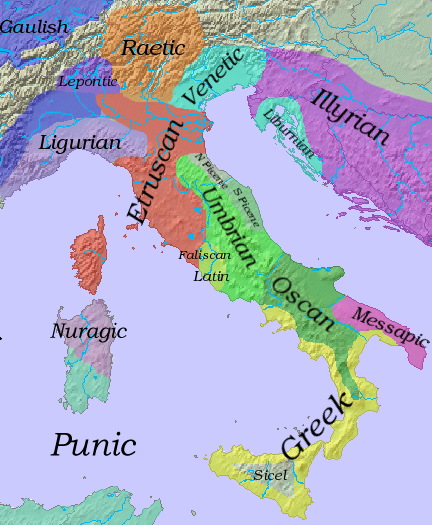|
Italo-Celtic
In historical linguistics, Italo-Celtic is a hypothetical grouping of the Italic and Celtic branches of the Indo-European language family on the basis of features shared by these two branches and no others. There is controversy about the causes of these similarities. They are usually considered to be innovations, likely to have developed after the breakup of the Proto-Indo-European language. It is also possible that some of these are not innovations, but shared conservative features, i.e. original Indo-European language features which have disappeared in all other language groups. What is commonly accepted is that the shared features may usefully be thought of as Italo-Celtic forms, as they are certainly shared by the two families and are almost certainly not coincidental. Interpretations The traditional interpretation of the data is that both sub-groups of the Indo-European language family are generally more closely related to each other than to the other Indo-European languages. ... [...More Info...] [...Related Items...] OR: [Wikipedia] [Google] [Baidu] |
Proto-Celtic Language
Proto-Celtic, or Common Celtic, is the ancestral proto-language of all known Celtic languages, and a descendant of Proto-Indo-European. It is not attested in writing but has been partly Linguistic reconstruction, reconstructed through the comparative method. Proto-Celtic is generally thought to have been spoken between 1300 and 800 BC, after which it began to split into different languages. Proto-Celtic is often associated with the Urnfield culture and particularly with the Hallstatt culture. Celtic languages share common features with Italic languages that are not found in other branches of Indo-European, suggesting the possibility of an earlier Italo-Celtic linguistic unity. Proto-Celtic is currently being reconstructed through the comparative method by relying on later Celtic languages. Though Continental Celtic presents much substantiation for Proto-Celtic phonology, and some for its morphology (linguistics), morphology, recorded material is too scanty to allow a secure rec ... [...More Info...] [...Related Items...] OR: [Wikipedia] [Google] [Baidu] |
Celtic Languages
The Celtic languages ( usually , but sometimes ) are a group of related languages descended from Proto-Celtic. They form a branch of the Indo-European language family. The term "Celtic" was first used to describe this language group by Edward Lhuyd in 1707, following Paul-Yves Pezron, who made the explicit link between the Celts described by classical writers and the Welsh and Breton languages. During the 1st millennium BC, Celtic languages were spoken across much of Europe and central Anatolia. Today, they are restricted to the northwestern fringe of Europe and a few diaspora communities. There are six living languages: the four continuously living languages Breton, Irish, Scottish Gaelic and Welsh, and the two revived languages Cornish and Manx. All are minority languages in their respective countries, though there are continuing efforts at revitalisation. Welsh is an official language in Wales and Irish is an official language of Ireland and of the European Union. Welsh ... [...More Info...] [...Related Items...] OR: [Wikipedia] [Google] [Baidu] |
Italic Languages
The Italic languages form a branch of the Indo-European language family, whose earliest known members were spoken on the Italian Peninsula in the first millennium BC. The most important of the ancient languages was Latin, the official language of ancient Rome, which conquered the other Italic peoples before the common era. The other Italic languages became extinct in the first centuries AD as their speakers were assimilated into the Roman Empire and shifted to some form of Latin. Between the third and eighth centuries AD, Vulgar Latin (perhaps influenced by language shift from the other Italic languages) diversified into the Romance languages, which are the only Italic languages natively spoken today, while Literary Latin also survived. Besides Latin, the known ancient Italic languages are Faliscan (the closest to Latin), Umbrian and Oscan (or Osco-Umbrian), and South Picene. Other Indo-European languages once spoken in the peninsula whose inclusion in the Italic branch is ... [...More Info...] [...Related Items...] OR: [Wikipedia] [Google] [Baidu] |
